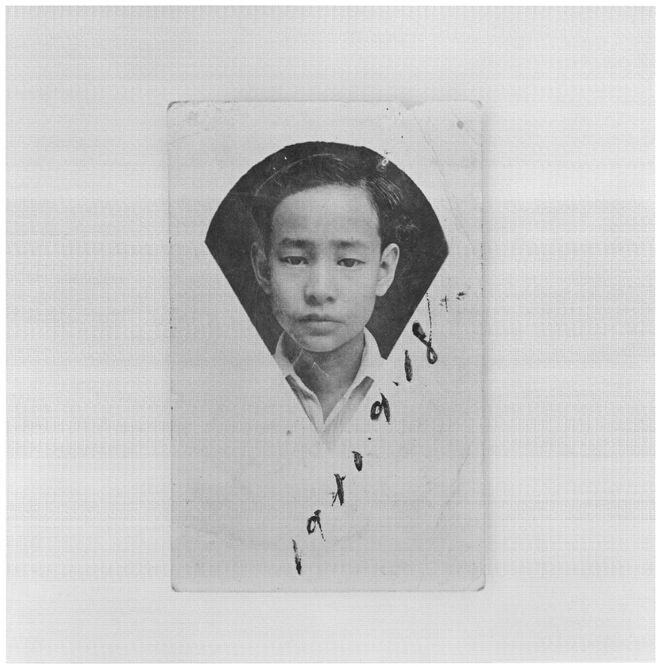
Li Lang, “Father 1927.12.03 – 2010.08.27”, Souvenir Picture Taken on September 18th, 1941, Archival Pigment Print with Pencil Writing, Internal Dimension: 107.8×106.6cm, External Dimension: 111.5×110.2cm, 2010-2013
黎郎,《父亲 1927.12.03-2010.08.27》之 1941 年 9 月 18 日的纪念照片,艺术微喷、铅笔书写,画 心:107.8×106.6cm,外尺寸:111.5×110.2cm,2010-2013
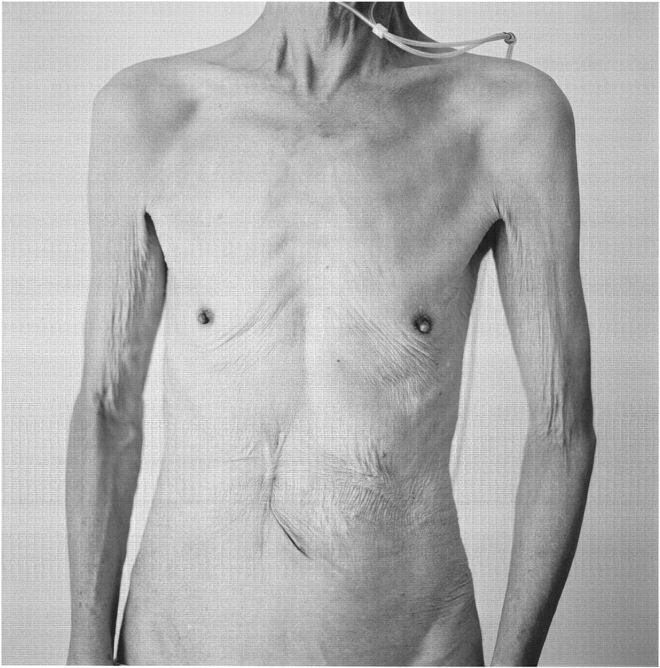
“Father 1927.12.03 – 2010.08.27”, Body A, Archival Pigment Print with Pencil Writing, Internal Dimension: 107.8×106.6cm, External Dimension: 111.5×110.2cm, 2010-2013
黎郎,《父亲 1927.12.03-2010.08.27》之身体 A,艺术微喷、铅笔书写,画心:107.8×106.6cm, 外尺寸:111.5×110.2cm,2010-2013
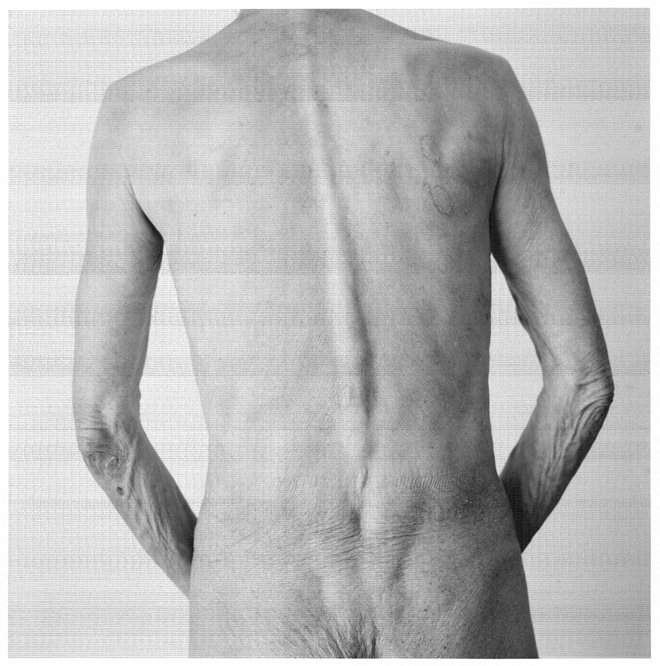
“Father 1927.12.03 – 2010.08.27”, Body B, Archival Pigment Print with Pencil Writing, Internal Dimension: 107.8×106.6cm, External Dimension: 111.5×110.2cm, 2010-2013
黎郎,《父亲 1927.12.03-2010.08.27》之身体 B,艺术微喷、铅笔书写,画心:107.8×106.6cm, 外尺寸:111.5×110.2cm,2010-2013
Li Lang (b. 1969, Chengdu) is an excellent photographer. He began to be known by the art scene in the late 1990s. His famous photography series “The Yi People” has won many prizes for him, including the Motherjones International Fund for Documentary Photography Awards. His works have been exhibited in many important platforms at home and abroad, many important museums and collectors have collected his works. Under the special theme “30,219 Days”, Li Lang presents 11 seemingly ordinary black and white photographs. We can tell an old man’s body parts, an old bracelet, a handwriting note, or an old photo of a young man…each of the photographs has been shrouded in a layer of gauze—the handwritten 241,752 numbers represent 30,219 days—From December 3rd,1927 to August 27, 2010, it’s the whole life of Li Lang’s father. Facing his dying father, Li Lang gave up all his thoughts about image logics, but chose the most plain way to record these images. After that, it costed him three years to complete these extremely personal works. He said:”I swap my time for the presentation of my father’s life experience, to satisfy my illusory surmise, so that I could make my father’s whole life completed by handwriting.”
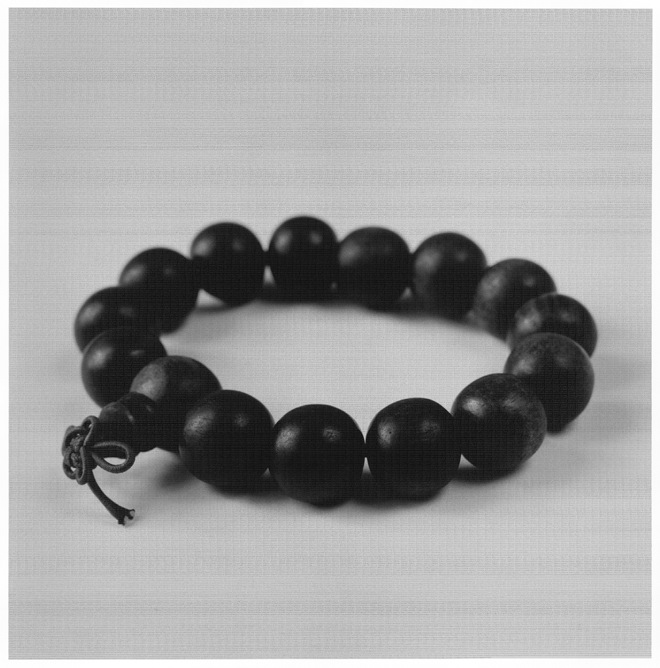
“Father 1927.12.03 – 2010.08.27”, My Father’s Bracelet, Archival Pigment Print with Pencil Writing, Internal Dimension: 107.8×106.6cm, External Dimension: 111.5×110.2cm, 2010-2013
黎郎,《父亲 1927.12.03-2010.08.27》之父亲的手环,艺术微喷、铅笔书写,画心:107.8×106.6cm, 外尺寸:111.5×110.2cm,2010-2013
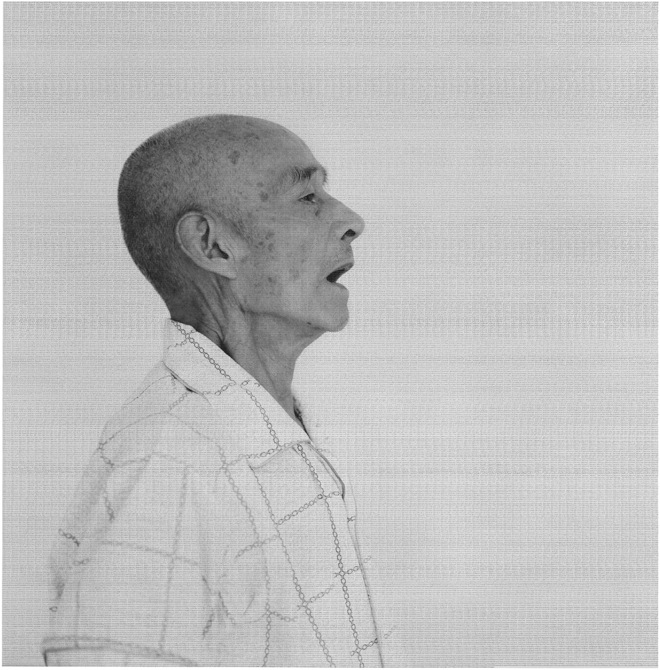
“Father 1927.12.03 – 2010.08.27”, My Father’s Last Portrait B, Archival Pigment Print with Pencil Writing, Internal Dimension: 107.8×106.6cm, External Dimension: 111.5×110.2cm, 2010-2013
黎郎,《父亲 1927.12.03-2010.08.27》之父亲最后的肖像 B,艺术微喷、铅笔书写,画心:107.8 ×106.6cm,外尺寸:111.5×110.2cm,2010-2013
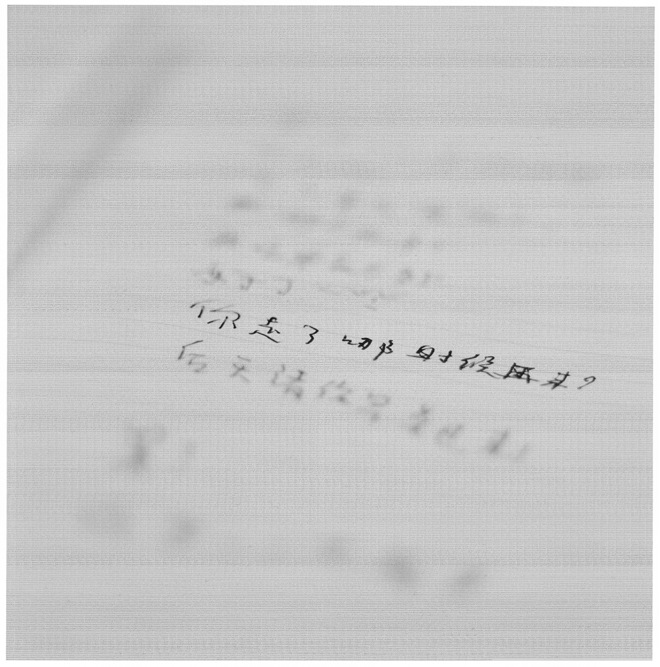
“Father 1927.12.03 – 2010.08.27”, The Last Question that My Father Left Me: When will you come again?, Archival Pigment Print with Pencil Writing, Internal Dimension: 107.8×106.6cm, External Dimension: 111.5×110.2cm, 2010-2013
黎郎,《父亲 1927.12.03-2010.08.27》之父亲给我留下的最后问题:你走了哪时候再来?,艺术微 喷、铅笔书写,画心:107.8×106.6cm,外尺寸:111.5×110.2cm,2010-2013
Li Lang’s Words About His Work
My father was laid to rest on the eve of the first Tomb-sweeping Day after he passed away. The black tombstone was engraved with his name and dates of birth and death, as well as a hyphen between the numbers, and the names of his family.
I stare into the most simple hyphen, can’t help to wonder—how many days had my father lived in this world for? How many days can a person live in the world for? Can the most simple punctuation mark really condense the whole life? These are so simple but boring questions, but no one can answer them. Many people don’t care much about how many days they could live in the world. For people who are alive, as they are alive and going to be alive, they don’t have time to think about that. For those who have passed away, as they have left, no one concerns about it for them.
My father had lived in this world for 30,219 days. Yes, I got this boring answer in an awkward way. Because I’m so concerned! Everyday my father spent is not only important to my father, but also equally important to me. Although my father didn’t think so.
I don’t want my father ’s colorless life summed up in the simple engraved birth and death days that connected with a simple punctuation mark, just like other people. I also know in fact even the two meaningful days would disappear from people’s memory. I want to erase the punctuation mark from my father’s tombstone, to restore every single day of his life. Guided by such an idea, I began my long writing work.
Time and time again, I wrote down the dates which composed of just eight figures on the photograph of my father’s body and remains. The days and nights writing is slow, it satisfies my illusory imagination to spend my time on building the presentation of my father’s life, so that to complete my father’s whole life with my pencil.
Once and once again, such a writing process brought me back to every day of my father’s life, and completed my imagination and memory of the world my father lived. During this process, my memory of my father turned from vague to clear, even the last day of his life seemed like yesterday.
If you ask me, my father had a plain life. In society, he is just someone who could be totally ignored, his departure was just as ordinary as any ordinary people’s. It was so ordinary that we could easily forget it. But I’m always resisting such oblivion, resisting the increasingly vague memory and emotion with time elapsing.
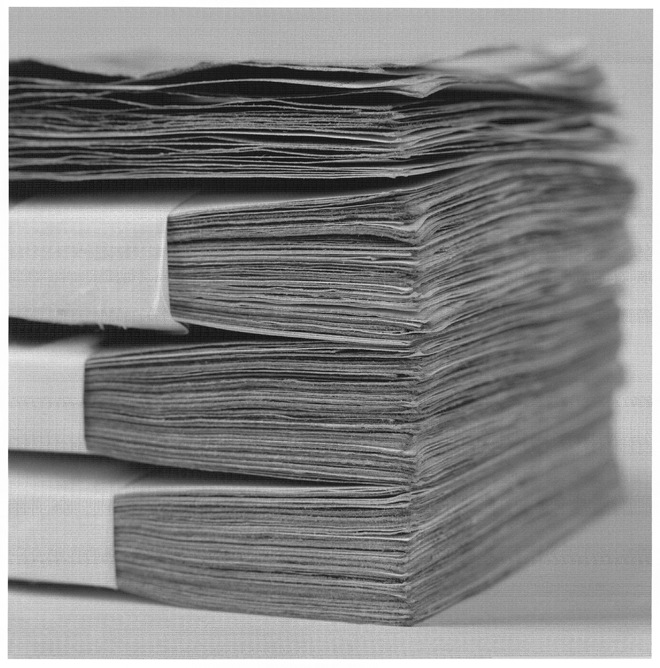
“Father 1927.12.03 – 2010.08.27”, Father’s pension: 32,136 RMB, Archival Pigment Print with Pencil Writing, Internal Dimension: 107.8×106.6cm, External Dimension: 111.5×110.2cm, 2010-2013
黎郎,《父亲 1927.12.03-2010.08.27》之父亲的抚恤金:32,136 元,艺术微喷、铅笔书写,画心: 107.8×106.6cm,外尺寸:111.5×110.2cm,2010-2013
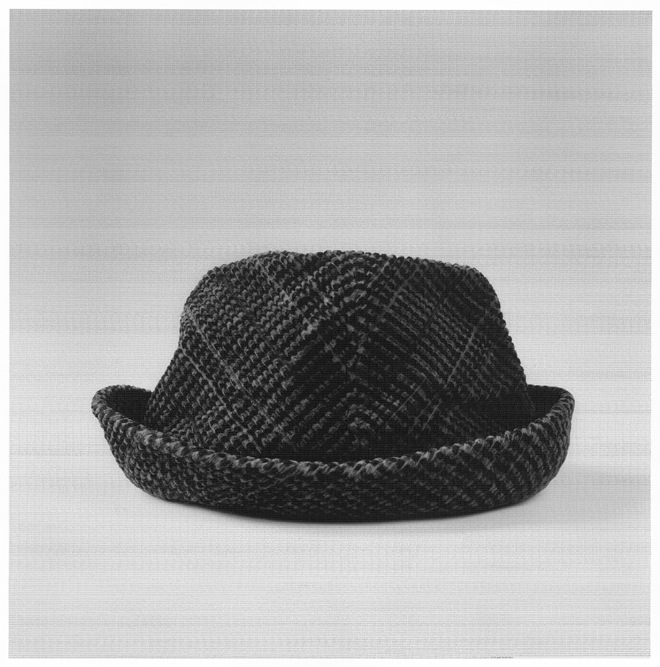
“Father 1927.12.03 – 2010.08.27”, My Father’s Hat, Archival Pigment Print with Pencil Writing, Internal Dimension: 107.8×106.6cm, External Dimension: 111.5×110.2cm, 2010-2013
黎郎,《父亲 1927.12.03-2010.08.27》之父亲的帽子,艺术微喷、铅笔书写,画心:107.8×106.6cm, 外尺寸:111.5×110.2cm,2010-2013
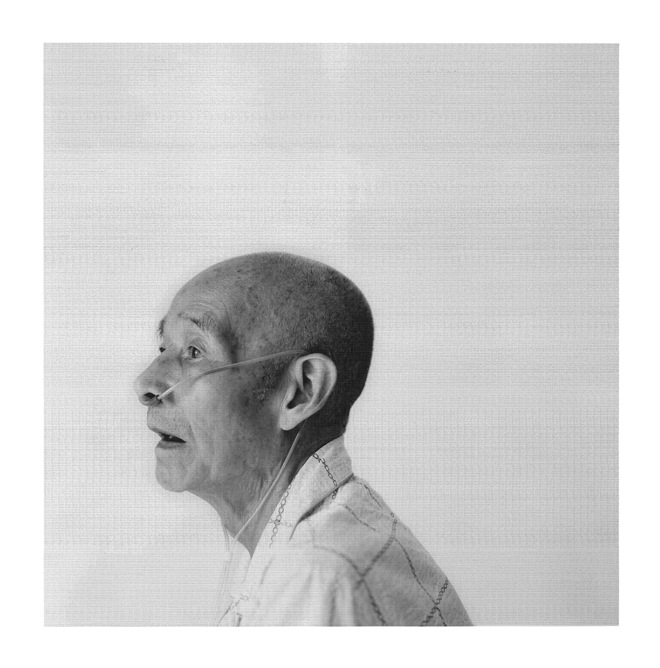
“Father 1927.12.03 – 2010.08.27”, My Father’s Last Portrait A, Archival Pigment Print with Pencil Writing, Internal Dimension: 107.8×106.6cm, External Dimension: 111.5×110.2cm, 2010-2013
黎郎,《父亲 1927.12.03-2010.08.27》之父亲最后的肖像 A,艺术微喷、铅笔书写,画心:107.8 ×106.6cm,外尺寸:111.5×110.2cm,2010-2013
The Intertwining of Lives
—About Li Lang’s Recent Works
By Xu Sheng
There is an old man in the photographs. They were taken quickly from both frontal and lateral views in natural light. The old man seems not requested to do any actions or expressions; he is slightly opening his mouth, naturally revealing his bright and warm sight. If an old man could show such expressions, he should know the photographer very well. In the way of recording, these portraits have record his most natural appearance, however, such record without distance can also be considered as the most low-key and real emotion expression. If not, we cannot understand the reason why the old man’s wrinkled body photographed so clearly. So are the other photographs. A slip of paper written with the plain missing and dependence; a hat; a rosary; a stack of overly enlarged RMB; an old photo in which there is a teenager…it seems that all the ordinary materials were photographed as the most valuable things.
With a closer look, we will find there are some dense and neatly arranged small handwriting dates, all written by pencils. Every day, every year, since December 3rd, 1927, till August 27, 2010. In fact, these dates include every day of Li Lang’s father’s life.
The old man in the photograph is Li Lang’s father, so is the teenager in the old photo. Those little objects are the remains of the old man. When someone leave forever, there are always something unimpressive or even disposable left with his temperature. They would bring back the most detailed and vivid memories in some moment. So it is with the objects in the photographs. Only those who would build the real inner relationship with the objects would photograph them in such a simple way, and without giving them any meaning in the logic of images.
As for the most deep moving portraits, as Li Lang recalls, before his father passed away, he believed he should take some photos for him. As everyone knows, it is a sentimental souvenir before death comes, or the comfort prepared for memory in the future. If people take photos in the scenic areas because they know they would leave, Li Lang photographed his father because he would not company with him forever. But he didn’t know how to take the photos or whether he should take the photos. He thought it ominous to take photos for his seriously ill father, it seems to indicate the death. In such kind of contradiction, he photographed his father’s portrait and body casually and quickly. As he recalls, at that time his father was just fresh out of the bath, he said, “Dad, don’t move, let me take some photos for you.” So the old man stood still. The first photo was taken with a respirator, then he thought it seemed not good, he removed it.
These are not early ready works. Instead, they come from Li Lang’s life experience of family affection during the past four years after his father’s death. He doesn’t know how to process the photos, or whether he should transfer them into artworks. It’s because he don’t want those photographs of his father and his father’s objects become his creation “materials”. However, his feelings of these photographs urged him to do something to console or reassure himself, or settle the matter about his father’s last photographs. At this moment, art creation comes back to the initial reason: born for a kind of emotional reflex.
Art is channel, no matter the fear or admiration of god, or the desperation or hope to life, or any haunting emotion, could transfer from inner energy into a kind of proof, and leave traces in the turbulent world and the hard-to-predict future. All Li Lang’s emotions have built a relationship with these photos, it’s already what he has to face. In other words, he has experienced the necessity of such catharsis. Finally he has found the best way, that is, to write down every date his father had lived in this world.
Li Lang seems to tell himself although his growth was witnessed by his father, he couldn’t witness every day of his father’s life. However, he hopes he could do it. He hopes he could appear before he was born to occupy all his father’s time, no matter it is beautiful or painful. It is like a kind of ceremony, despite the impossibility, Li Lang wants to arouse the passing time, going back to the early days, or let the early days back again. Li Lang chooses a way which is as accurate as time to make every day like the scales on the timeline. As the result of different humidities everyday, those scripts present varied depth, like the rhythm of a ceremony, revealing his energy in the inner world. Through those scripts, he seems intend to break the obstacle of time so that he could back to the period when his father was a teenager, to re-watch how he turned old. Of course it’s impossible, those accurate scales make us find the callousness of life. But only such family affection and love gives people the reason to hit against such callousness.
Although the style is not lyric, the works are full of emotion and the deepest relationship between Li Lang and his father. Such relationship can only be separated by time. However, at one level, this kind of block is not important at all. The intertwining of lives is mysterious and everlasting. In the world of art, it has left its own traces in Li Lang’s works.
